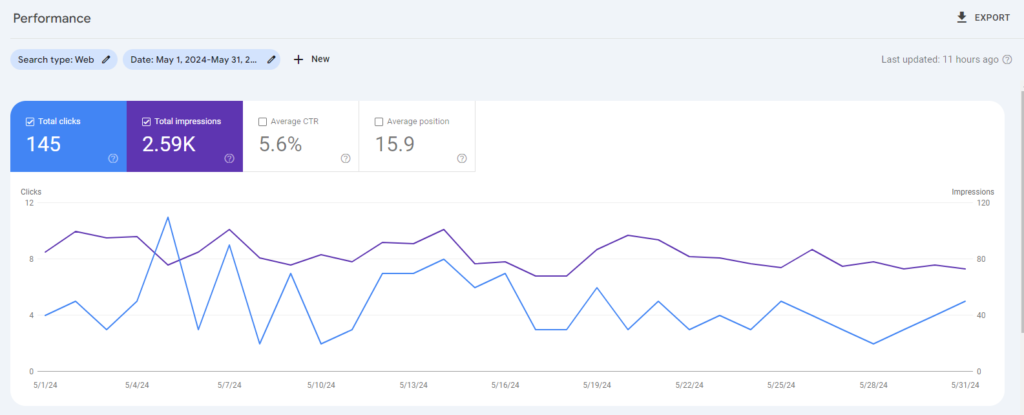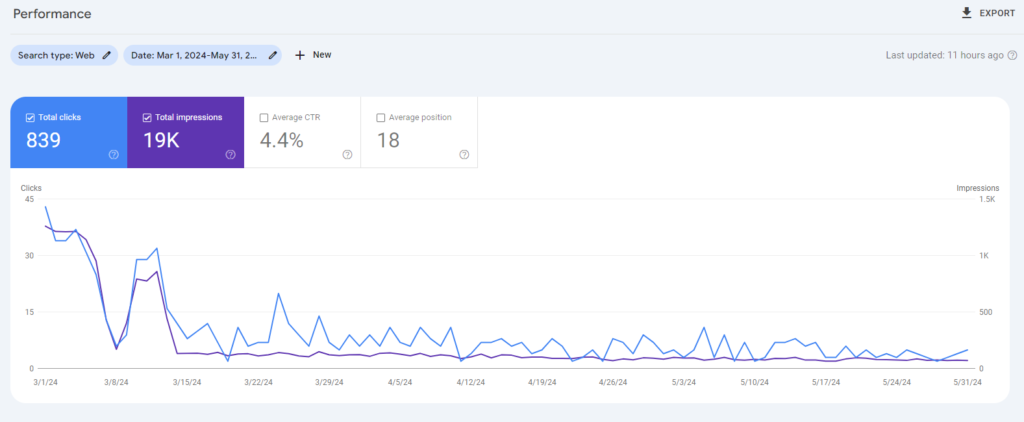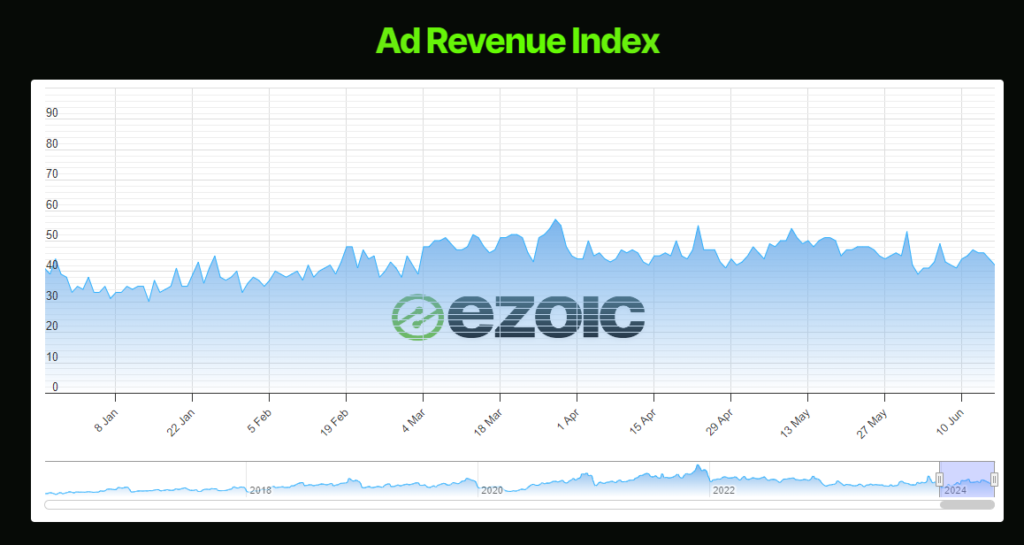May was a month of planning and learning all about social media content. Not only is there a whole range of new platforms and technology interfaces to learn, but you have to learn how users interact with that platform, why they are there, and what kind of content will add to their experience and boost engagement (and hopefully clicks through to my site). You also need to have an understanding of what types of content are likely to be supported by the platform, or potentially throttled.
There have been no bouncebacks of any kind in terms of organic Google traffic, so the flat levels I am currently seeing on this case study site are certainly here to stay, until I start leveraging social channels as a new traffic source.
Site Recap
The site is in the ‘Entertainment’ niche – established in January 2021. Monetized with Ezoic advertising.
Approx 350k words of content over 300+ posts.
See full site history, content publishing breakdown, and traffic history here.
May Statistics
May traffic was very flat – a month with basically zero search traffic from Google is the new normal.
Looking at the last three months’ trend, there is nowhere further to fall. Yes, there is SOME traffic trickling in, but it is essentially is nothing.


From a revenue standpoint, we experienced our first full month of the complete organic traffic decimation this case study site has experienced. Monthly revenue of $13. and EPMV of $6.33 is about what I can expect from this site, if that, over the coming months while I transition from the nonexistent Google traffic, and develop other sources.
Analyzing the last three months of Ezoic income on this site, the trend is not so obvious, given the daily fluctuations in revenue. But if you look at the low points as the period progresses, you can see they are forming lower highs and lower lows.


Comparison to the Ezoic Ad Revenue Index
The Ad Revenue index suggests that overall rates have not changed hugely and the demand for exposure from Ezoic advertisers is staying relatively stable. It is just the way that Google is diverting its traffic that is impacting my site’s revenue. Not fluctuating ad rates.

Comparing my site to others using the Ezoic dashboard, you can see that I have not created as much content as them (none), however, I saw higher percentage growth in traffic than others on average.
Given the tiny amount of traffic that my site is experiencing, it is hard to put any significance into these figures, and they are ‘interesting’ at best and don’t actually reveal anything of note.

June Activity
In my previous blog post, I shared my decision to pivot from a Google-centric content strategy to one that leverages the power of social media. This strategic shift aims to engage more directly with my audience and drive traffic to my blog through social channels. Today, I’m excited to share the progress I’ve made on Step 1: Identifying the Right Platforms.
Evaluating the Social Media Landscape:
The first step in my journey was to evaluate the social media landscape. Each social media platform has its own unique characteristics, audience demographics, and content formats.
Here are the platforms I considered and the factors that influenced my decision:
- Facebook:
- Pros: Massive user base, diverse demographics, robust advertising tools, strong community-building features through groups and pages.
- Cons: Organic reach has declined significantly, high competition, and the need for frequent content updates to stay relevant.
- Twitter:
- Pros: Real-time engagement, strong for news and trending topics, effective for sharing short-form content and links, active user base.
- Cons: Content lifespan is very short, high noise-to-signal ratio, and requires constant activity to maintain visibility.
- Instagram:
- Pros: Highly visual platform, strong engagement rates, effective for brand building, Stories and Reels offer dynamic content options and growing e-commerce features.
- Cons: Limited link-sharing capabilities, primarily mobile-focused, require high-quality visuals.
- Linked In:
- Pros: LinkedIn’s user base consists primarily of professionals, making it an ideal platform for B2B content, industry insights, and networking.
- Cons: While this can be a pro for B2B content, it may limit reach if your blog content is more general or consumer-focused.
- TikTok
- Pros: TikTok has seen explosive growth, especially among younger demographics, offering a vast potential audience.
- Cons: The focus on short videos may not be suitable for all types of content, particularly in-depth or complex topics.
The Platforms I Chose and Why
After an in-depth evaluation of the different social media platforms, weighing their pros and cons, and considering my blog’s unique needs and audience, I have decided to focus on three primary platforms: Facebook, Instagram, and TikTok.
Next month I’ll give progress updates and explain my plan and action on each social media channel.


